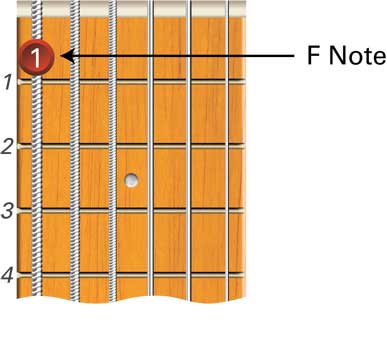
Notes on the Sixth String (E)
There are three notes to learn on the sixth string, the open E note, the F note on the first fret and the G note on the third fret.
E Note (6th String)
The open sixth string is an E note. This E note is written under the third ledger line below the staff.




F Note (6th String)
The note on the first fret of the sixth string is an F note. Use the first finger of your left hand to fret this note. This F note is written on the third ledger line below the staff.


G Note (6th String)
The note on the third fret of the sixth string is a G note. Use the third finger of your left hand to fret this note. This G note is written under the second ledger line below the staff.


Left Hand Technique

Left hand technique is essential when reaching for the notes on the 6th string.
At this stage it will be necessary to review your left hand technique. The notes on the sixth string can be difficult to reach comfortably at first, particularly the F note on the first fret. Make sure your left hand is correctly in position with the thumb behind the neck and your fingers arched evenly across the first four frets.
The following exercise features notes on the sixth and fifth strings. An open 1st string is played after each bass note. Remember to use alternating fingers.

